NAMIBIA 2025
May 1st
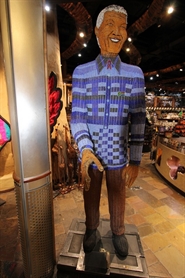
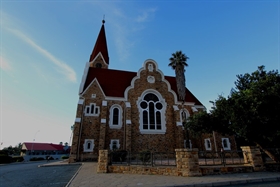
After the trip (Lyon - Frankfurt - Johannesburg - Windhoek) we spend our first night in the capital of Namibia, there is little, if anything, to see in this city.
We first picked up our 4X4 with its 2 roof tents.
A well-deserved night's rest in a charming hotel with unparalleled hospitality.
We first picked up our 4X4 with its 2 roof tents.
A well-deserved night's rest in a charming hotel with unparalleled hospitality.
Pictured is Windhoek's only monument, Christ Church.
Pictured at Johannesburg Airport is the life-size pearl statue of Nelson Mandela.
May 2
Today we begin our exploration of Namibia by leaving the capital to reach the Namib Desert.
The Namib Desert or Namib Erg is a hot coastal desert in southwestern Namibia. It is considered the oldest desert in the world, dating back at least 55 million years.
The desert covers an area of approximately 80,900 km2. It stretches for more than 1,500 km along a north-south coastal strip 80 to 160 km wide that runs along the Atlantic Ocean.
The Namib Desert or Namib Erg is a hot coastal desert in southwestern Namibia. It is considered the oldest desert in the world, dating back at least 55 million years.
The desert covers an area of approximately 80,900 km2. It stretches for more than 1,500 km along a north-south coastal strip 80 to 160 km wide that runs along the Atlantic Ocean.
We pass through Solitaire, a place located in a no man's land with car wrecks reminiscent of the film "Baghdad Café" there is only one restaurant and one bakery.
We continue to Sesriem, a place where there is the campsite of the same name and nothing else, we are at the gates of the Namib Park.
We continue to Sesriem, a place where there is the campsite of the same name and nothing else, we are at the gates of the Namib Park.
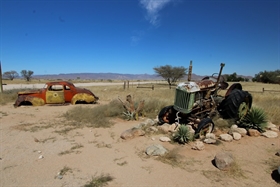
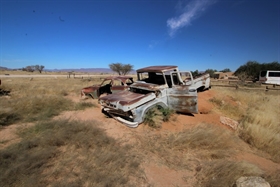

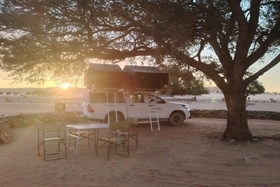
Pictured is the "Village" of Solitaire.
Pictured is Sesriem Camp.
May 3
At daybreak we set off to visit the Sossusvlei desert, a salt and clay desert with superb dunes. We climbed one of them as the sun rose to reveal splendid colours.
At the bottom of the dunes there is a valley called DeadVlei which means "the dead marsh" indeed the landscape is magnificent with ochre colored dunes, the white colored salar and black colored trees.
These trees died millions of years ago (this place has been used as a setting for films).
We will return to admire this place with a different light, that of the sunset.
At the bottom of the dunes there is a valley called DeadVlei which means "the dead marsh" indeed the landscape is magnificent with ochre colored dunes, the white colored salar and black colored trees.
These trees died millions of years ago (this place has been used as a setting for films).
We will return to admire this place with a different light, that of the sunset.
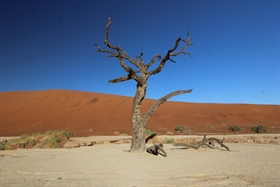
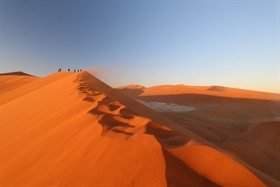
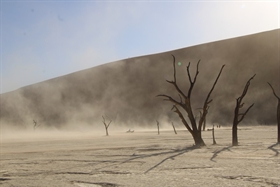
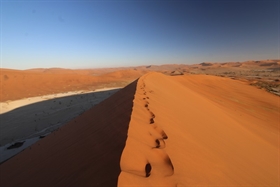
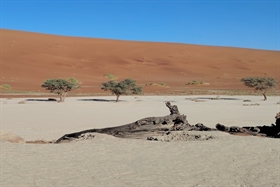
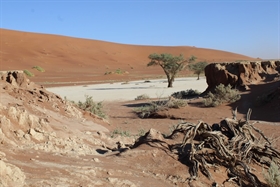
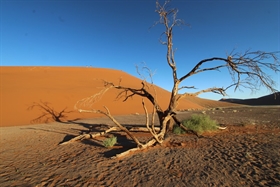
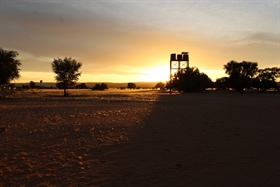
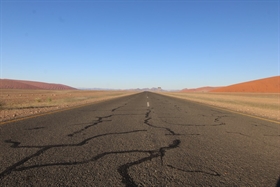
Pictured is Sesriem Camp.
May 4
Our journey continues on dusty tracks for more than 300km, we cross the Tropic of Capricorn, we reach the town of Swakopmund After the strong heat, the town is shrouded in fog due to the contrast between desert and ocean.
This city exudes a special atmosphere; we feel as if we're back in the colonial era. Luckily, the next day, we'll discover it in the sunshine.
This city exudes a special atmosphere; we feel as if we're back in the colonial era. Luckily, the next day, we'll discover it in the sunshine.
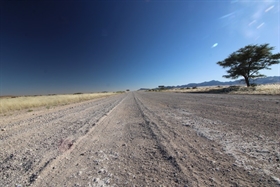
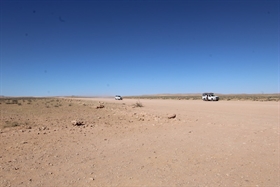
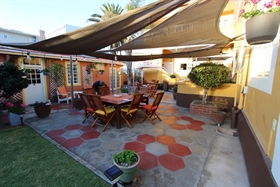
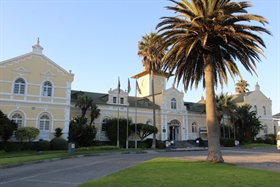
Pictured is the passage of the Tropic of Capricorn.
Pictured is Villa Margherita.
May5
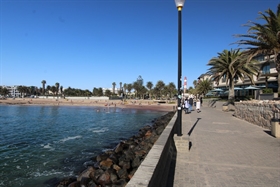
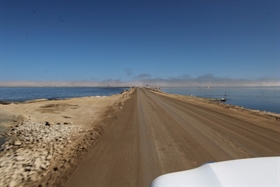
We spend the day in Swakopmund, we go to Walvis Bay to observe the pelicans and flamingos.
We go to the salt marshes, on the way back we pass by the port and can see the daily life of the Namibians.
We go to the salt marshes, on the way back we pass by the port and can see the daily life of the Namibians.
May 6
Before reaching our next objective of the day we go to the Cape Cross reserve.
Cape Cross is home to the largest of Namibia's 15 fur seal colonies (Arctocephalus pusillus), which number 6,500,000.
The spectacle of these millions of people is impressive, a nauseating smell emanates, but in front of these images we end up getting used to it and stay for a long time.
Cape Cross is home to the largest of Namibia's 15 fur seal colonies (Arctocephalus pusillus), which number 6,500,000.
The spectacle of these millions of people is impressive, a nauseating smell emanates, but in front of these images we end up getting used to it and stay for a long time.
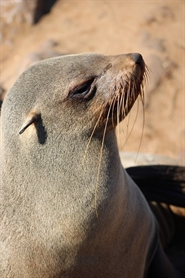
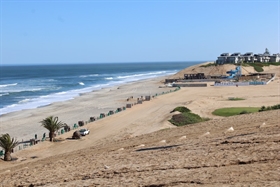
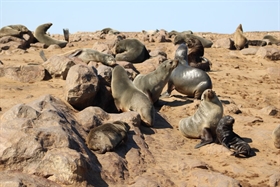
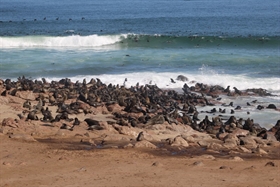
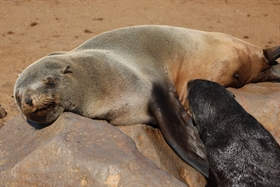
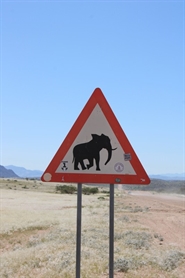
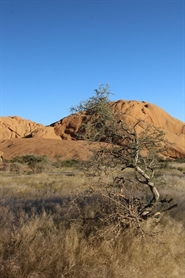
In the evening we arrive at Spitzkoppe. We are at a campsite but it looks like a wild bivouac, the spaces are immense (we don't see any other campers), no water, no electricity, absolute calm in magnificent landscapes.
Spitzkoppe is located in Damaraland between Usakos and Swakopmund (the summit is at an altitude of 1,728 m) in the Namib Desert. The rock there is over 700 million years old, and the highest point is 1,728 meters above sea level, 700 meters above the surrounding plains.
The effect is all the more striking as the surrounding terrain is completely flat.
Spitzkoppe is located in Damaraland between Usakos and Swakopmund (the summit is at an altitude of 1,728 m) in the Namib Desert. The rock there is over 700 million years old, and the highest point is 1,728 meters above sea level, 700 meters above the surrounding plains.
The effect is all the more striking as the surrounding terrain is completely flat.
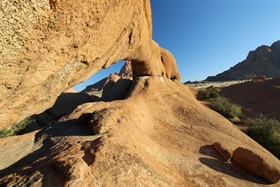
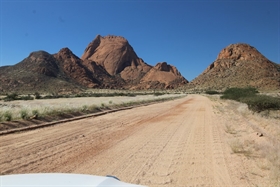
May 7
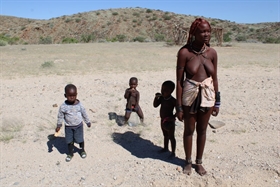
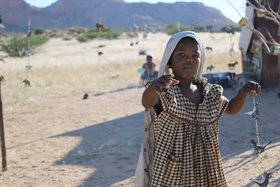
This evening we have to reach Twyfelfontein, on the way we come across Himba people asking for water, we take the opportunity to take some pictures.
In the afternoon we will return to our splendid lodge where the accommodation and food will be perfect.
In the afternoon we will return to our splendid lodge where the accommodation and food will be perfect.
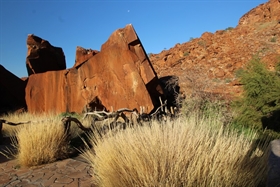
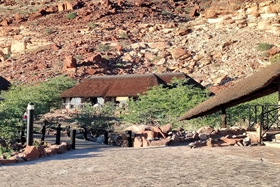
May 8
En photo Twyfelfontein Country Lodge.
Today we head to Etosha Park, where we will sleep in a campsite where a watering hole can be seen from the campsite, a watering hole where many animals come to drink at night.
Etosha National Park is a large protected area covering 22,935 km2. Only about a third of the park is open to the public. Etosha is one of Africa's largest game reserves, home to 114 mammal species and 340 bird species.
Etosha National Park is a large protected area covering 22,935 km2. Only about a third of the park is open to the public. Etosha is one of Africa's largest game reserves, home to 114 mammal species and 340 bird species.
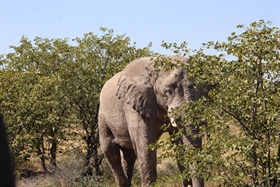
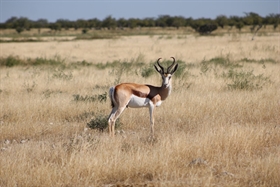
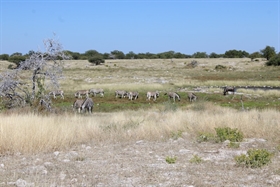
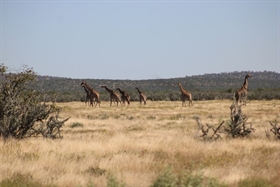
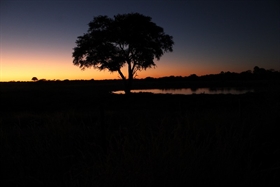
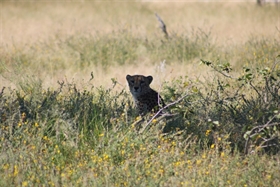
En photo Okaukuejo Camp.
May 9
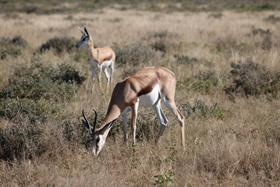
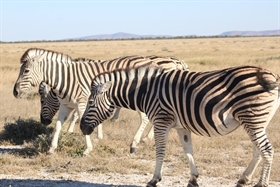
Second day in Etosha, we change campsites.
May 10
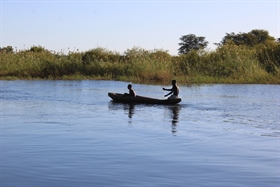
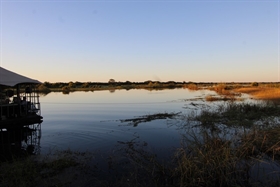
A long road stage awaits us today (approximately 550 km).
We are staying at a campsite about thirty kilometers from Rundu; this place is simply an intermediate stopover.
We are staying at a campsite about thirty kilometers from Rundu; this place is simply an intermediate stopover.
May 11
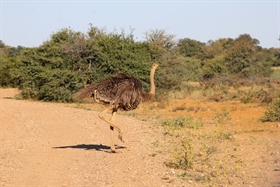
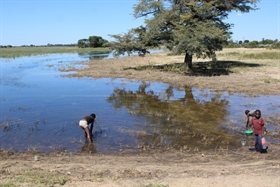
We spend 2 nights at the "Mahangu Safari Lodge" on the edge of the Okavango.
The Okavango Delta, or sometimes Okavango Swamp, is the second largest inland delta in the world (18,000 km2).
This lodge is splendid on the banks of the river. It is close to the Mahango reserve, we visit this reserve where we have the chance to see many animal species (Elephant, Giraffe, Warthog, Ostrich).
The Okavango Delta, or sometimes Okavango Swamp, is the second largest inland delta in the world (18,000 km2).
This lodge is splendid on the banks of the river. It is close to the Mahango reserve, we visit this reserve where we have the chance to see many animal species (Elephant, Giraffe, Warthog, Ostrich).

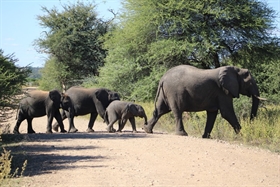
May 12
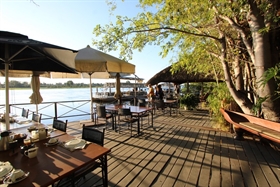

On this second day at "Mahangu Safari Lodge" we are entitled to breakfast on a boat.
We cruise the Okavango Delta for over an hour and have the pleasure of seeing many hippos.
In the afternoon we visited Buffalo Park but we were disappointed especially after Mahangocar Park we didn't see any animals and the trails were of very poor quality.
We cruise the Okavango Delta for over an hour and have the pleasure of seeing many hippos.
In the afternoon we visited Buffalo Park but we were disappointed especially after Mahangocar Park we didn't see any animals and the trails were of very poor quality.
In photo Mahangu Safari Lodge.
May 13
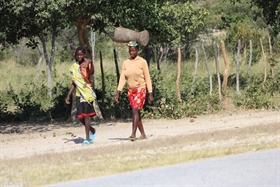
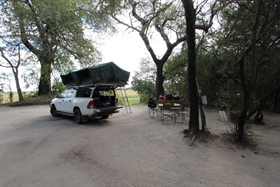
A day of driving awaits us, we are in the Caprivi Strip.
The Caprivi Strip is a 450-kilometer-long and 30-kilometer-wide corridor named after German Chancellor Leo von Caprivi.
We stayed at a campsite without much interest (the only one during our entire stay), this place was simply an intermediate stop.
The Caprivi Strip is a 450-kilometer-long and 30-kilometer-wide corridor named after German Chancellor Leo von Caprivi.
We stayed at a campsite without much interest (the only one during our entire stay), this place was simply an intermediate stop.
May 14
A long road trip awaits us today (approximately 550 km). We stop at Katima Mulilo where we do some shopping.
We arrive at the "Senyati Safari Camp", a campsite located at the gateway to Chobe National Park.
There is a watering hole at the edge of the campsite where many animals come to drink in the evening and at night, we are surprised by the proximity of the animals.
We arrive at the "Senyati Safari Camp", a campsite located at the gateway to Chobe National Park.
There is a watering hole at the edge of the campsite where many animals come to drink in the evening and at night, we are surprised by the proximity of the animals.
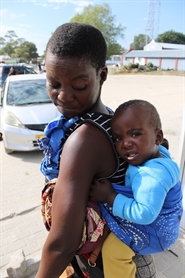
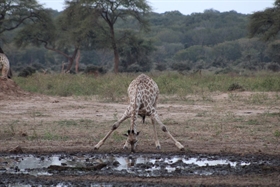
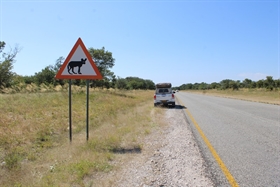
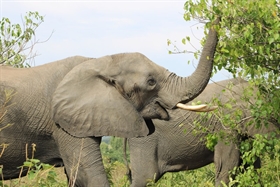
May 15
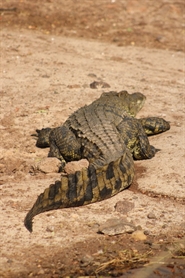
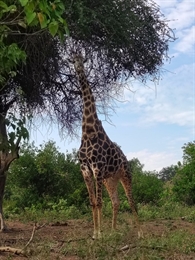
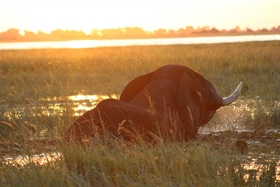
This morning we visit the magnificent Chobe Park.
Chobe National Park is Botswana's first national park (it straddles Namibia and Botswana). It is also the one with the greatest biodiversity.
Located near the town of Kasane, in the north of the country in the Chobe district.
In the afternoon we take a long walk on the Chobe River and have the pleasure of seeing numerous herds of elephants, crocodiles and hippos.
Chobe National Park is Botswana's first national park (it straddles Namibia and Botswana). It is also the one with the greatest biodiversity.
Located near the town of Kasane, in the north of the country in the Chobe district.
In the afternoon we take a long walk on the Chobe River and have the pleasure of seeing numerous herds of elephants, crocodiles and hippos.
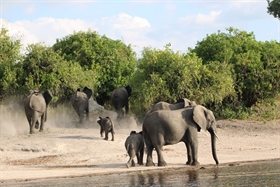
May 16
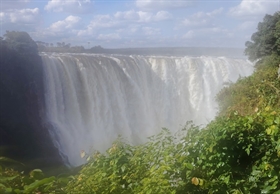
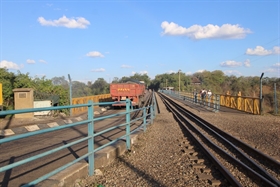
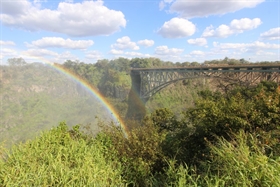
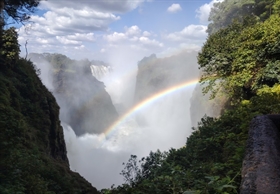
To end our stay, we will end with the majestic Victoria Falls.
Before that we cross Botswana before reaching Zimbabwe.
Victoria Falls (locally known as Mosi-Oa-Tunya, meaning "the thunder of smoke") are waterfalls located on the Zambezi River, which at this point forms the border between Zambia, near the town of Livingstone, and Zimbabwe.
The river flows into the cataract, which is about 1,700 meters wide and can reach a maximum height of 108 meters.
They provide a remarkable spectacle due to their particular arrangement: they flow into a long fault in the plateau, to escape through a narrow canyon. They can therefore only be seen head-on from a distance of about a hundred meters. Taking into account their width, height and flow, they are among the most important cataracts in the world, along with Niagara Falls and Iguazu Falls.
Before that we cross Botswana before reaching Zimbabwe.
Victoria Falls (locally known as Mosi-Oa-Tunya, meaning "the thunder of smoke") are waterfalls located on the Zambezi River, which at this point forms the border between Zambia, near the town of Livingstone, and Zimbabwe.
The river flows into the cataract, which is about 1,700 meters wide and can reach a maximum height of 108 meters.
They provide a remarkable spectacle due to their particular arrangement: they flow into a long fault in the plateau, to escape through a narrow canyon. They can therefore only be seen head-on from a distance of about a hundred meters. Taking into account their width, height and flow, they are among the most important cataracts in the world, along with Niagara Falls and Iguazu Falls.
A journey with breathtaking landscapes, of extraordinary variety, we went from the fascinating desert dunes with changing colors throughout the day to wildlife parks.
Tracks in the heart of the desert and extraordinary encounters, quality accommodations with flawless hospitality.
Tracks in the heart of the desert and extraordinary encounters, quality accommodations with flawless hospitality.